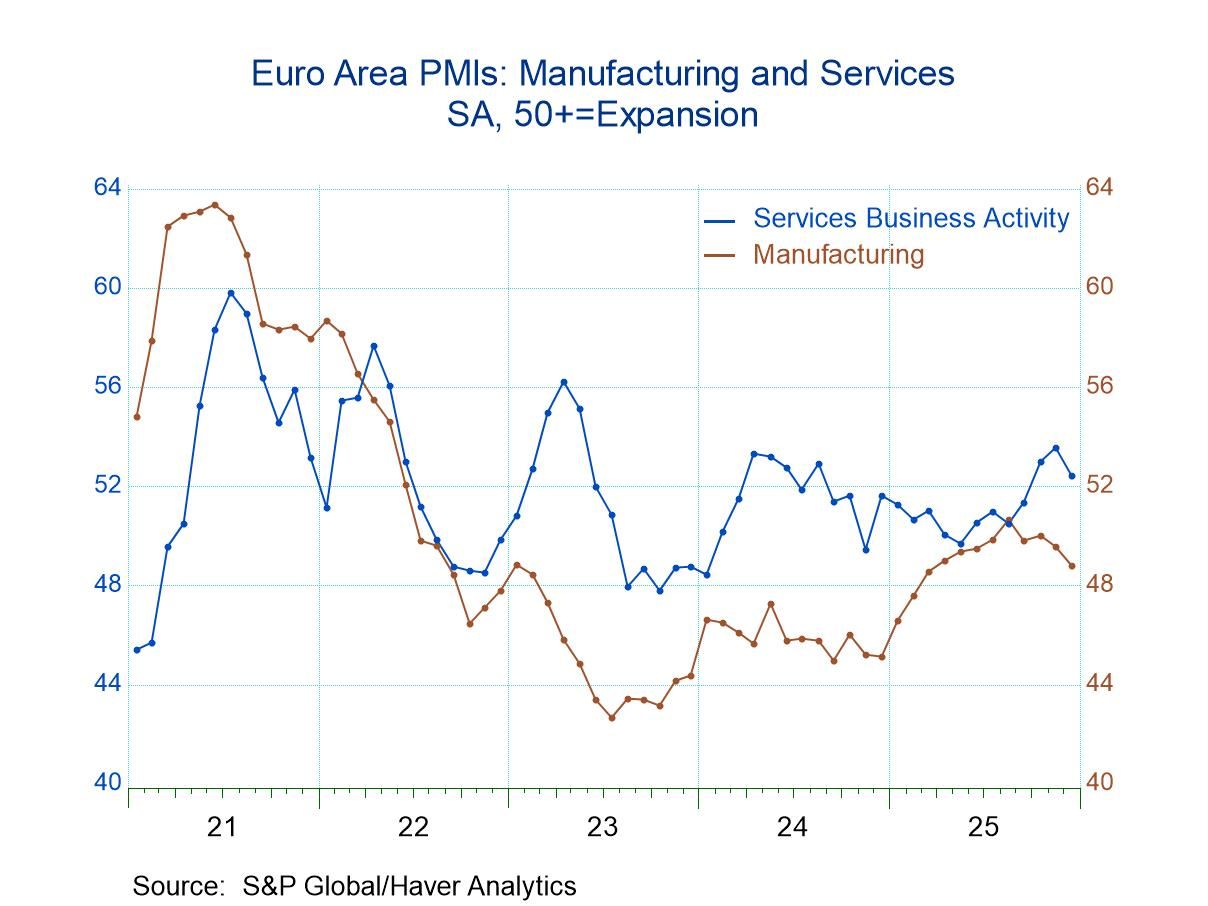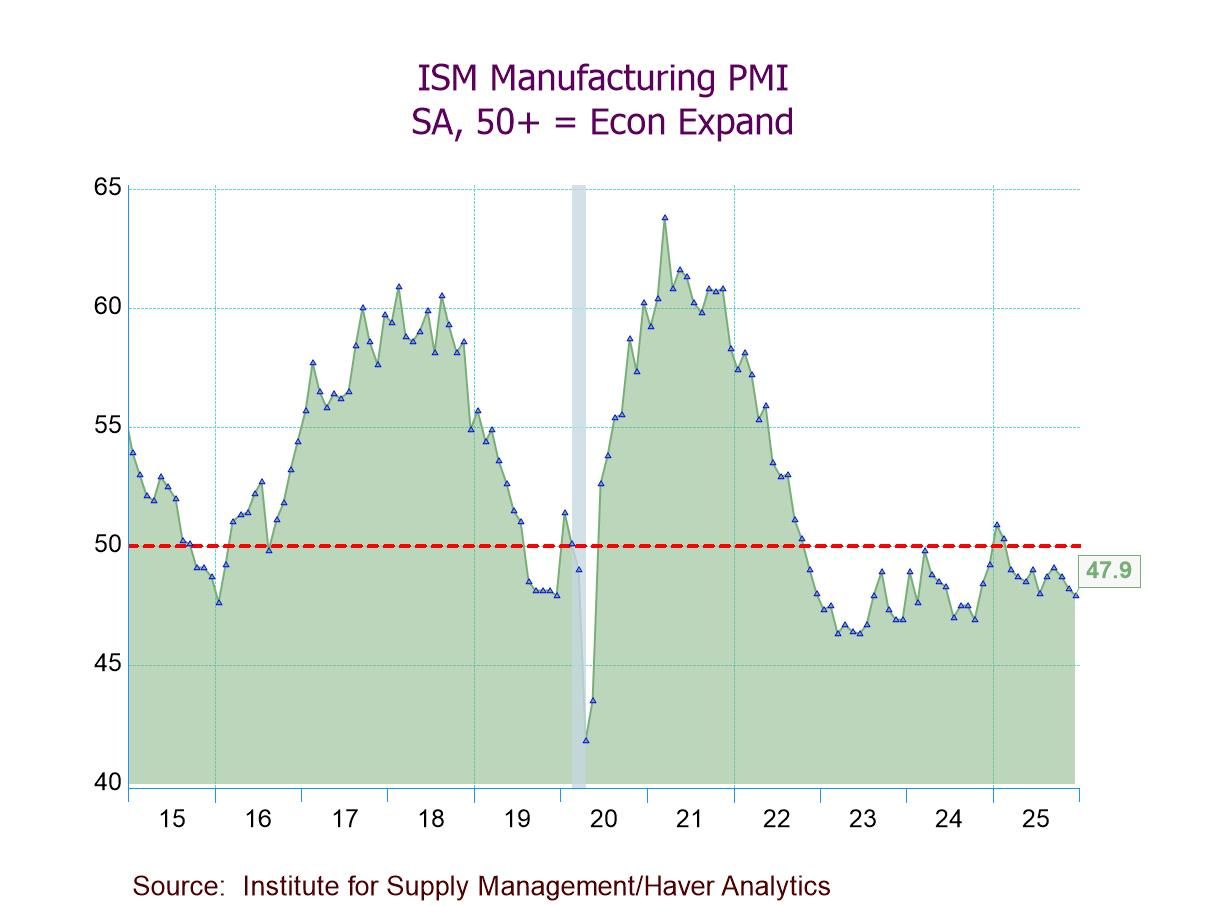Japan’s Economy Watchers Index Slows and Stalls

Japan's Economy Watchers index slipped ever so slightly in January to 48.5 from 48.7 in December after reaching 49.4 in November. The future index has continued to creep up to 49.3 in January from 46.8 in December and 46.3 in November. Both the current index and the future index diffusion values reside below ‘50’ indicating that current growth and expected future growth is still expected to be weaker rather than stronger. However, the decrement for future growth is shrinking.
The rankings for these two current and future index headlines are quite similar with the current index having a queue standing at its 62.8 percentile while the future index has a 62.5 percentile standing. Although both show activity declining, the levels of the diffusion indexes are above their respective medians for the period of comparison. The data look backward over values since January 2002, a span of 21 years.
Current Index The current index does feature some strength. Eating and drinking places have a ranking in their 83.8 percentile, household responses have a ranking in their 73.5 percentile, retail has the ranking in its 75.9 percentile, services have a ranking at their 69.2 percentile, while nonmanufacturing corporations as a whole have a 54.5 percentile standing. All of those are above their 50th percentiles and therefore above their period medians. On the weaker end of things, are the overall corporate standing at a 47.4 percentile standing, that is clearly dragged down by manufacturers with a 43.1 percentile standing. Employment overall has a 39.9 percentile standing. Housing is also weak at a 40.3 percentile standing. These standings apply to the current diffusion values. They show employment, with the highest diffusion value at 51, and yet the lowest ranking among all the components. Services have a diffusion reading of 50, but the ranking that is firm, at its 69th percentile. All the rest of the current diffusion readings are below a value of 50 and signal contraction. That just gives you some idea the nature of the period that we're comparing these values with that values with diffusion this low nonetheless read as relatively firm or strong standings when compared to history.
Future Index The future index shows the most strength in retailing at a 76.3 percentile standing, followed by nonmanufacturing corporations with the 68.8 percentile standing, eating and drinking places at a 67.6 percentile standing and households at a 66th percentile standing. On the weaker end of things, again, we have employment as the weakest standing at its 38.3 percentile followed by housing with a 47.8 percentile standing and services with a 48.2 percentile standing. Looking at the diffusion values across the board, only nonmanufacturers have a reading above 50 and their reading is at 50.4 barely above the breakeven 50 mark for diffusion.

Changes… The portion of the table on changes shows that over three-month declines in diffusion values have been basically the rule in the current index and have dominated the future index. Over six months, performance in the current index is scattered while the future index generally shows improvement. Over 12 months, both indexes show improvements up and down the line.
The chart shows how the various diffusion measures have slogged their way up from weaker readings but have had a hard time sustaining even their current levels and are currently under pressure and most of them show flatness or a gradual tailing off. Japan continues to battle cross currents in its own economy as more recently it has had a COVID outbreak that has been relatively severe largely because it had kept COVID in a bottle and now as it begins to spread there is not much immunity in Japan. The Bank of Japan has gotten the inflation rate up above 2%, but it's basically higher on volatile items and the BOJ is not sure that it's really conquered its disinflation woes. Of course, Japan has a shrinking population, but it continues to cling to the homogeneity of its population and does not seek an influx of migrants to bolster its population. There has been talk about encouraging more women to enter the labor force because that is still not very popular in Japan. Fertility rates in Japan have nonetheless been low because Japan's living expenses and costs of maintaining a family are so high; many young couples have avoided starting families because of the expense.
Robert Brusca
AuthorMore in Author Profile »Robert A. Brusca is Chief Economist of Fact and Opinion Economics, a consulting firm he founded in Manhattan. He has been an economist on Wall Street for over 25 years. He has visited central banking and large institutional clients in over 30 countries in his career as an economist. Mr. Brusca was a Divisional Research Chief at the Federal Reserve Bank of NY (Chief of the International Financial markets Division), a Fed Watcher at Irving Trust and Chief Economist at Nikko Securities International. He is widely quoted and appears in various media. Mr. Brusca holds an MA and Ph.D. in economics from Michigan State University and a BA in Economics from the University of Michigan. His research pursues his strong interests in non aligned policy economics as well as international economics. FAO Economics’ research targets investors to assist them in making better investment decisions in stocks, bonds and in a variety of international assets. The company does not manage money and has no conflicts in giving economic advice.




 Global
Global

